Honey we shrunk the Ekka!
By Michelle Brown, Mick Byrne & Ellie Dumigan | 11 November 2024
We love the miniature enthusiast community in Brisbane, and we have a range of resources and equipment at The Edge which are perfect for miniature making. So we decided to give our Hack the Evening community a creative challenge to build a miniature retrofuture sideshow alley during their regular Thursday meetups.
You can read more about the project in our first blog post, where we also found some terrific Ekka gems in the State Library collection.
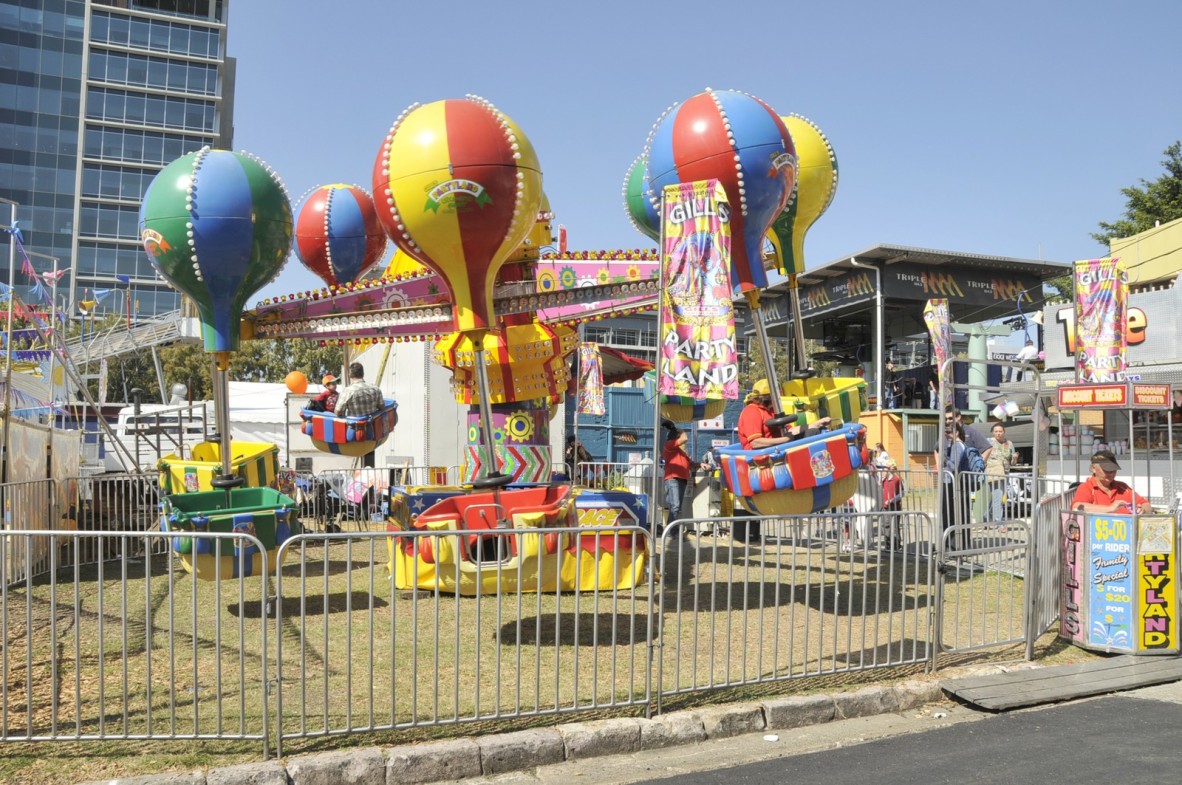
Making miniature versions of the significant built and cultural heritage of Queensland is a great way explore personal and shared history. Our Queensland Miniature Architecture workshops are always a hit and there are examples of the urge to build smaller versions of big things like Paul Morris’ laser cut model of the Story Bridge all throughout our history.
This project has been a great way for new and existing participants to explore different creative outputs and test the limitations of our digital fabrication equipment. We’ve seen it also be a vehicle for different people to discover new interests.
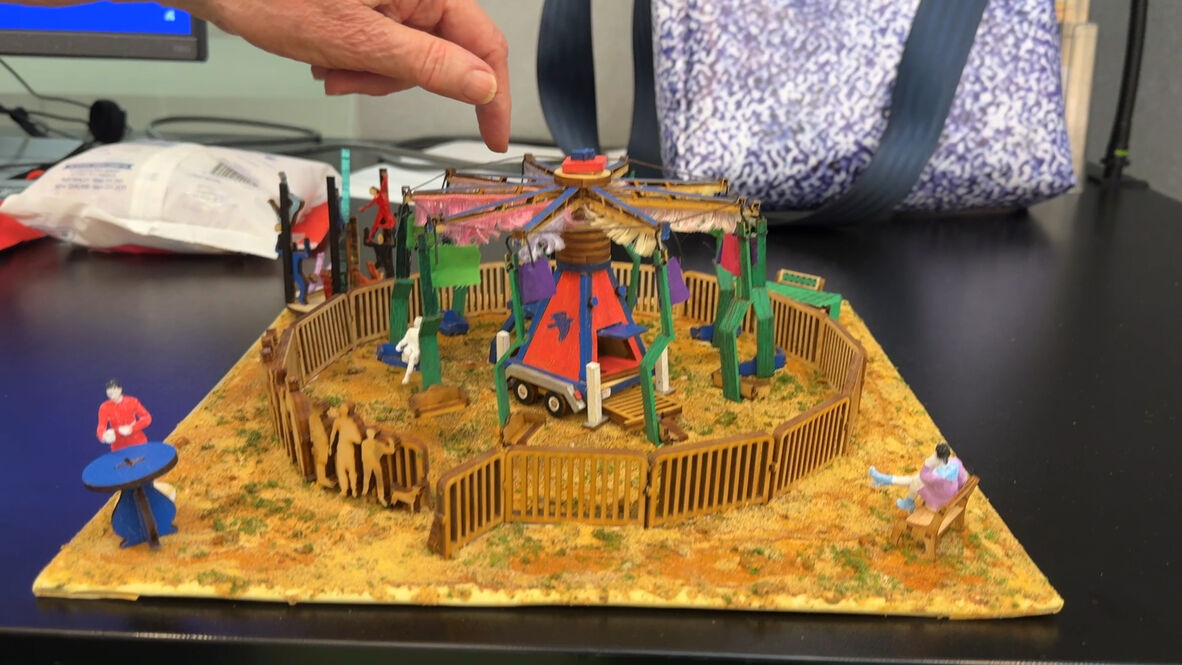
Wind Flyer swing ride - Diane
A regular over the years at Hack the Evening and The Edge workshops, Diane has built several different attractions for this project. Starting with a swing ride based on the Windjammer theme park attraction, Diane used several reference photos to create the design using vector software and adapted it to the 1:32 scale the group decided to work in, she then laser cut the pieces. Working in such a small scale (something small enough to fit on a desk but big enough to add a little detail and some lights and animation) meant she needed to find some interesting solutions to make the model not only assemble, but look great and swing cleanly, and she nailed the brief!
After completing the mechanical assembly of the miniature, she worked with her grandchildren to explore making an Augmented Reality media overlay of the installation. When engaging with the miniature you can sync your mobile device using a QR code to see and hear animations and audio, which Diane created using Adobe Aero.
Haunted House - Diane
Diane's second project is a haunted house experience, like the one’s pictured in the Library collection, featured in our last blog post. There’s a whole origin story that sits behind this one too, see the exert below.
"When Daffodil and Si Green built their home, they only used recycled materials. Even though they were in isolated bushland, or maybe because of it, people gave them stuff for free and even delivered it! Very generous. Maybe. When it included unusable timber scraps and metal, Si did question their apparent generosity.
The house plans were, let’s face it, basic. Self-builders Si and Daffodil had minimal experience. Actually no experience in house building, so the home was indeed strange. It evolved to fit the materials at hand, rather than the other way round. Si said that ‘the materials spoke to him and that was how he decided what to do next’.
Of course building did not go smoothly. Things did not always fit. Things needed redoing. Things needed rethinking. Both had a strong artistic streak, but sometimes their visions clashed. Daffodil would then spend some time under her favourite tree or Si would refuse to say a word. Eventually, though, they succeeded in erecting their unique home: to them a work of artistic achievement, but to others just weird.
However, all was not well. With the house surrounded by building materials they no longer needed, they could not begin on the garden. Plus they had no money to purchase the solar panels and battery they needed to live off grid. The few dollars that Si earned at the markets selling his original (odd) wooden kitchen utensils and that Daffodil earned selling her original (again, odd) puppets was not enough. So, when Daffodil hesitatingly suggested to Si that they use the unwanted building materials for a Haunted House, Si jumped at the idea.
In the same way that their house evolved, so did their Haunted House, which you can see here today! And it has been a great success, because WEIRD is just right for a Haunted House."
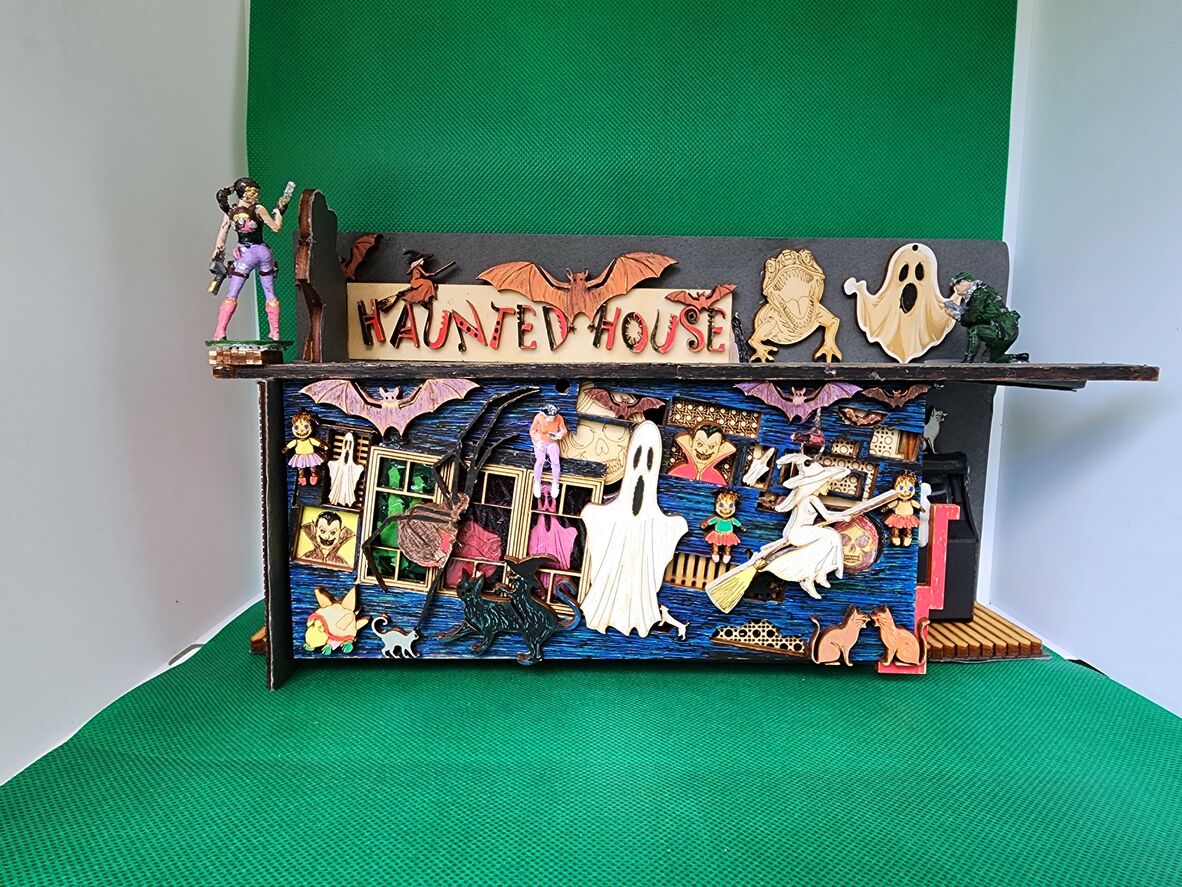
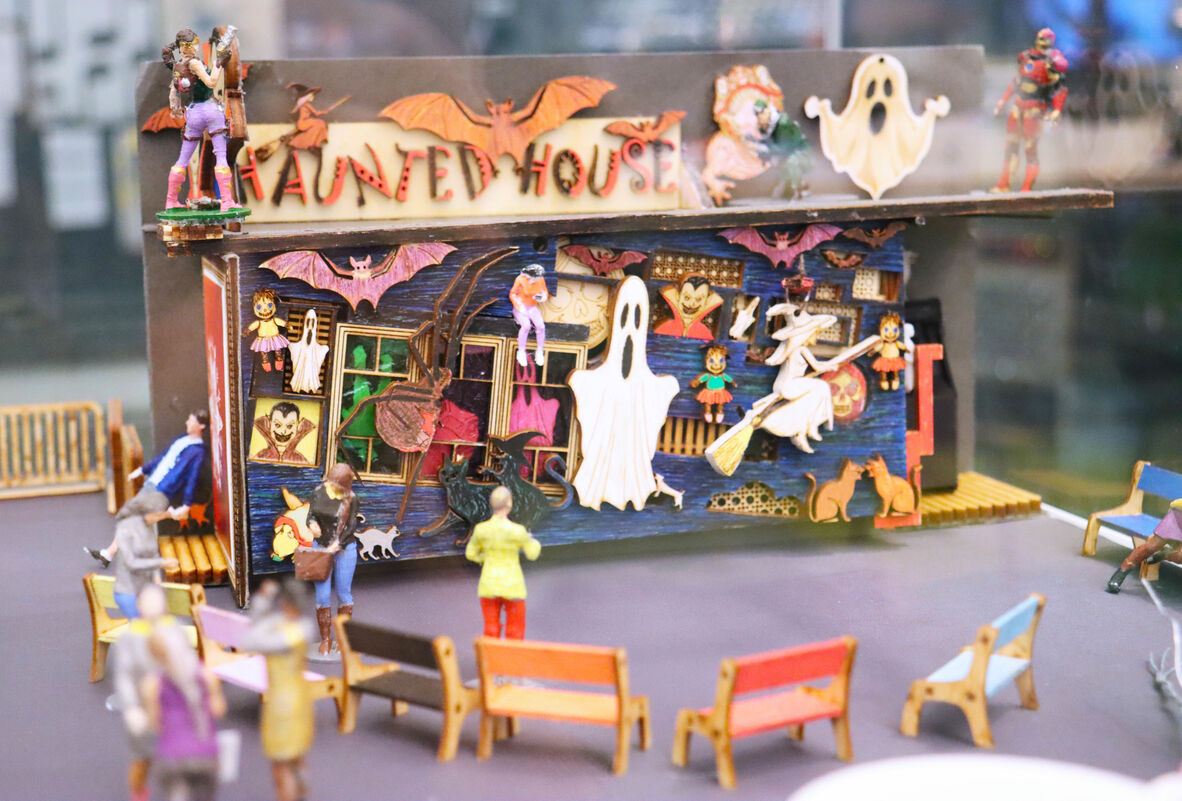
Dodgem Cars - Andrew
Another regular user of The Edge, Andrew, comes along to most of the Open Lab and Hack the Evening sessions and he was keen to get creative for this project.
He’s been working on building an accurate Dodgem car track and platform including a cloth tent and detailed cars, with miniature riders holding onto miniature steering wheels!
Andrew grew up in Darwin and would attend the Royal Darwin Show. His favourite attractions from the show were the farm animals, the Gravitron and Octopus rides, dirt bike performances and getting a show bag. But one attraction had a particular impact on him. When he was about 10 years old he was buzzing around in the dodgems when, out of now where, someone smacked into him. His head was thrown forward into the steel steering wheel and he smashed his front tooth.
Apart from this run in with the Dodgems, Andrew’s background in Architecture drew him to the dodgem car project. The tent structures that housed the dodgem track are pretty fascinating. Its actually a pretty big structure that they need to be able to quickly assemble, disassemble and transport to the next show. Andrew based his designs of the tents steel frame from photos of the web and modelled it in SketchUp. from there he could export the file to cut on the laser cutter out of 2mm thick plywood. After cutting the frames out on the laser, the work started to fit it all together.
For the dodgem cars, Andrew found a basic model on 3D warehouse (SketchUp's market place for users to share and sell their creations) that he adapted and printed in a few different sizes until he got the scale right for our miniature sideshow alley.
When considering the covering for the tent, Andrew had a couple of options. He could model it and 3D Print, but that would take a long time to print in parts and would be difficult to get looking good. Cutting something on the laser would probably be difficult to get looking good too. This is where our Open Lab and sewing facilitator, Jimmy Eng got involved. Together they agreed a fabric tent would look more authentic and this could be attached using magnets ( allowing the viewer to take a peak at the details underneath the tent).
Read more about Jimmy's creative tent adventure below.
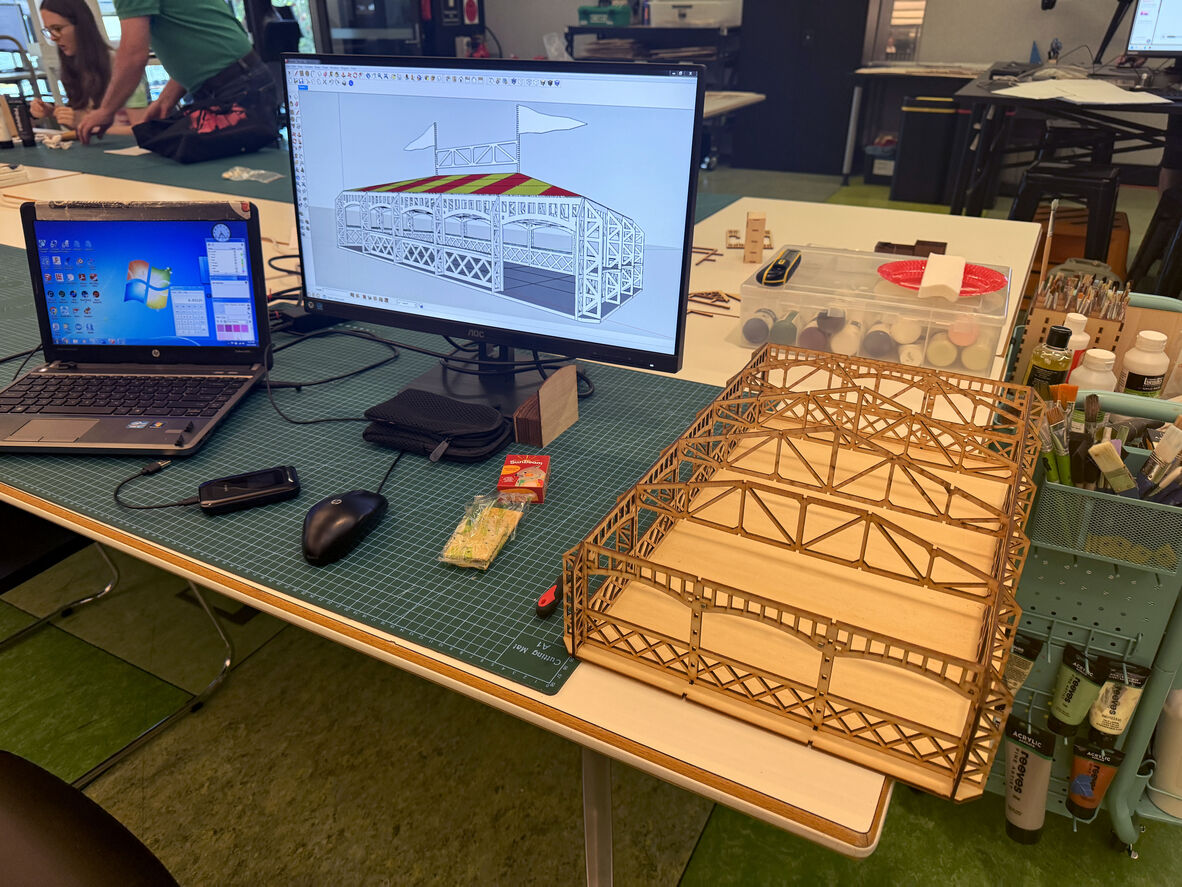
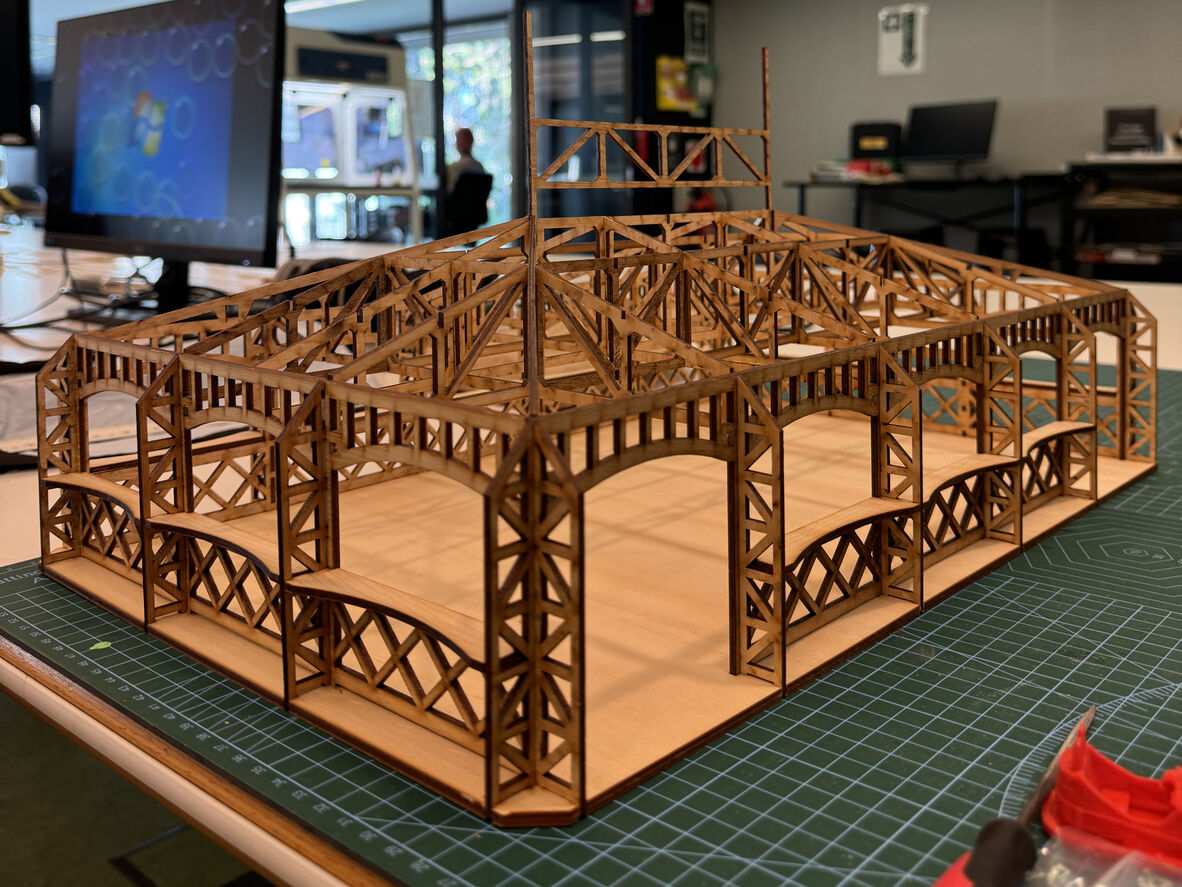
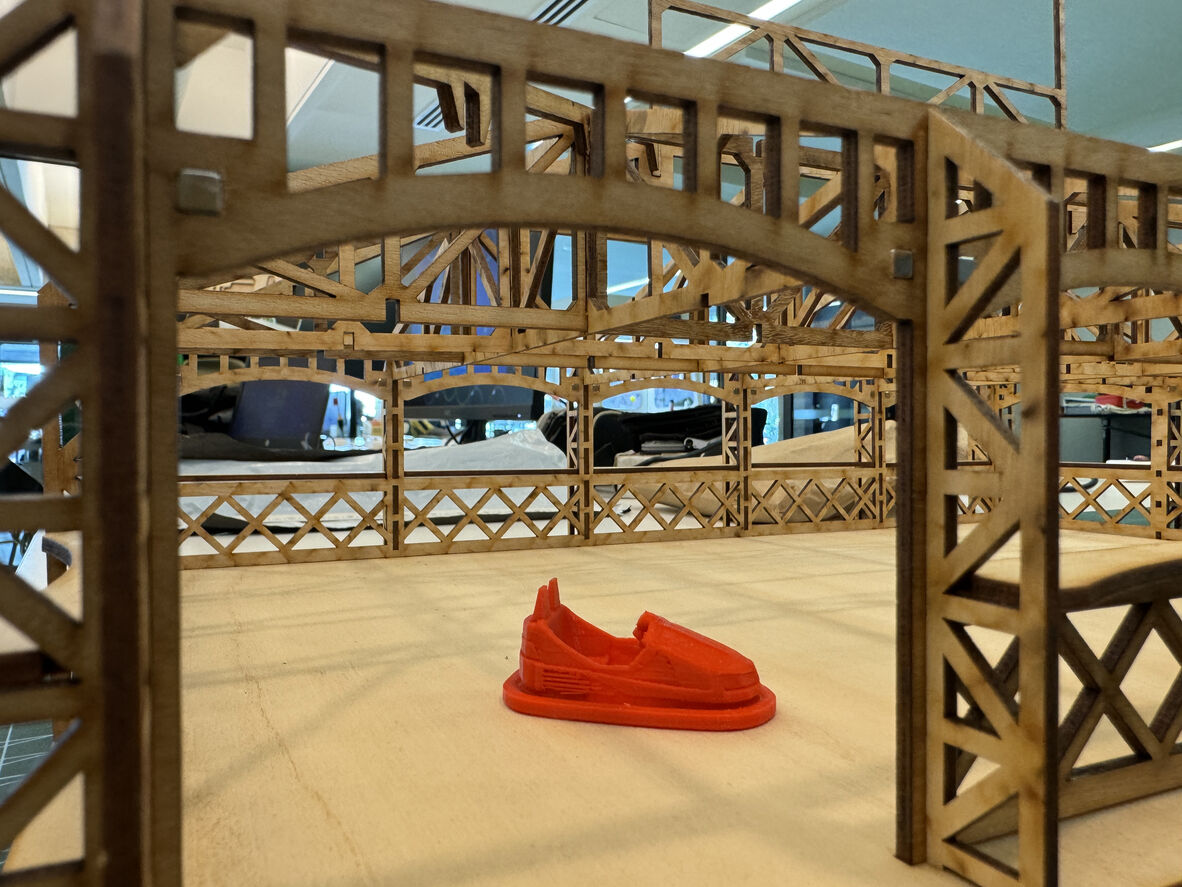
Tent covers - Jimmy
Jimmy has never actually been to the Ekka, but he grew up in Howard Springs, and would regularly attended the Fred's Pass show. Jimmy also regularly attended the Royal Darwin Show. He loved the cows, the rides, the food, and nominates the dagwood dog as his show favourite.
Jim was keen to find an opportunity to sew something for this project, there was lots of people 3D printing and cutting things on the laser, but he wanted to showcase how sewing skills could contribute. So when Andrew mentioned that a fabric tent was an idea he was trying to bring to life, it made sense for the pair to collaborate.
Jimmy is pretty pleased with how the finished miniature tent canvas turned out, saying "sewing together different colours to get the distinctive look and the braided trim I added on top really looks just like the details on the real thing". He confessed to learning more than he thought he would through the process. Sewing for miniature can be a lot more complicated than working on life size projects. Leaving enough seam allowance to account for puckering of the fabric is really important at the smaller scale and making sure all the magnets aligned and that he didn't sew over them (and break the needle or machine) or get them stuck to the metal machine we all things he hadn't thought of before.
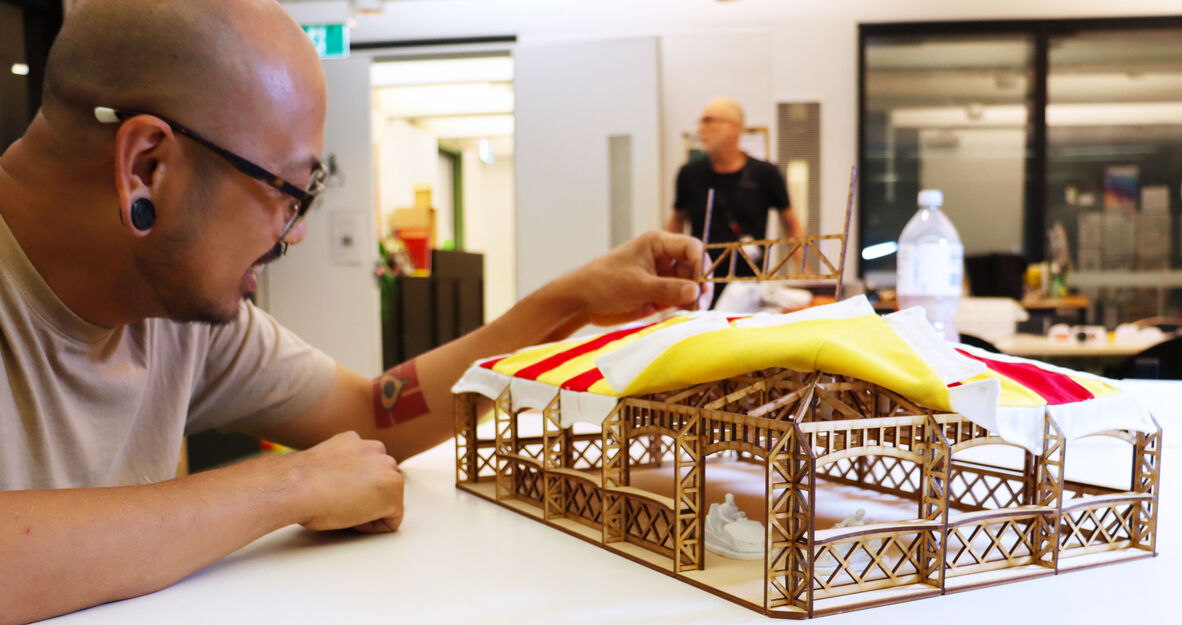

Shannon’s Chips Bus – Mick
Shannon's Chips was always a Byrne family favourite at the Toowoomba Show. So, when we started talking at Hack the Evening about what must have miniature attractions, Mick piped up and said, “we definitely need a Shannon's Chips van”, a staple of Royal Agricultural Shows in South Queensland since 1948. Finding a terrific collection of images of the vans on local Facebook history groups, Mick used these photos to create a replica, which was modelled in Fusion 360 and printed on The Edge’s 3D printers.
Once the main part of the vehicle was finished printing, it was time to add in further details, including a miniature prep table, a fridge, a row of fryers with mini baskets for the hand cut chips and a light up sign with flashing LEDs. Mick has since spent his weekends painting the details to create a homage to the Byrne family favourite.
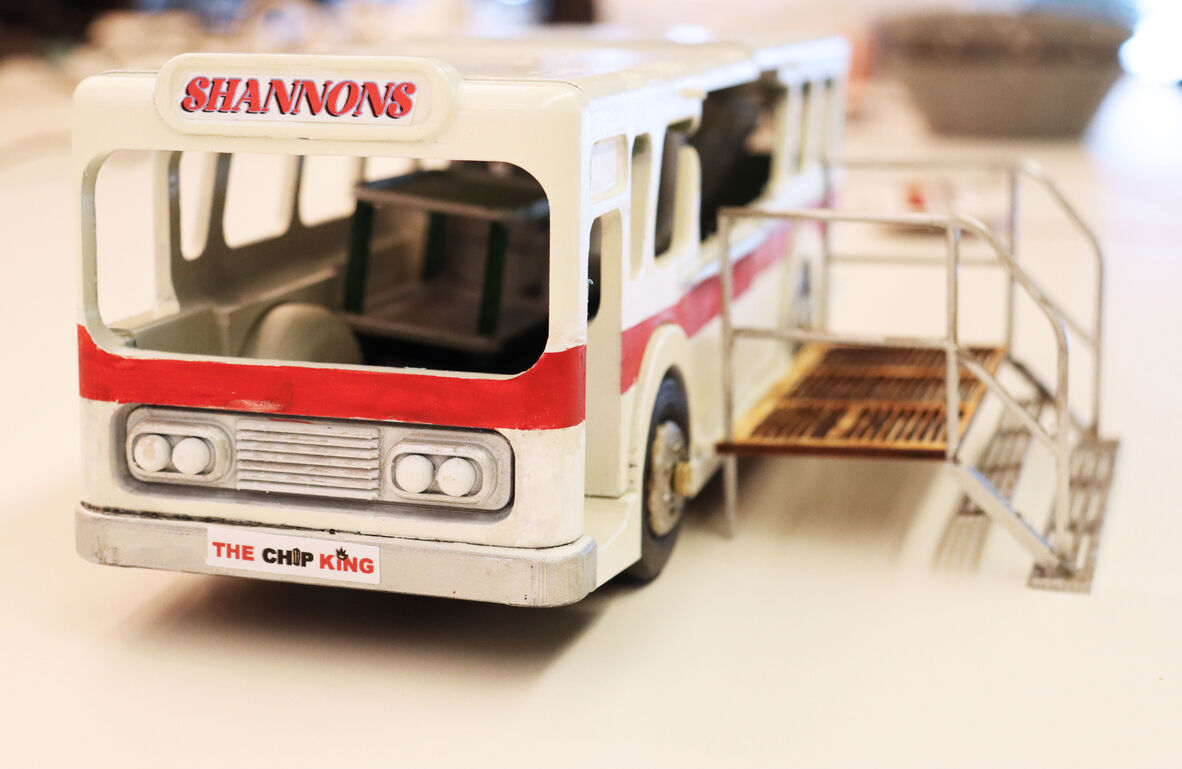
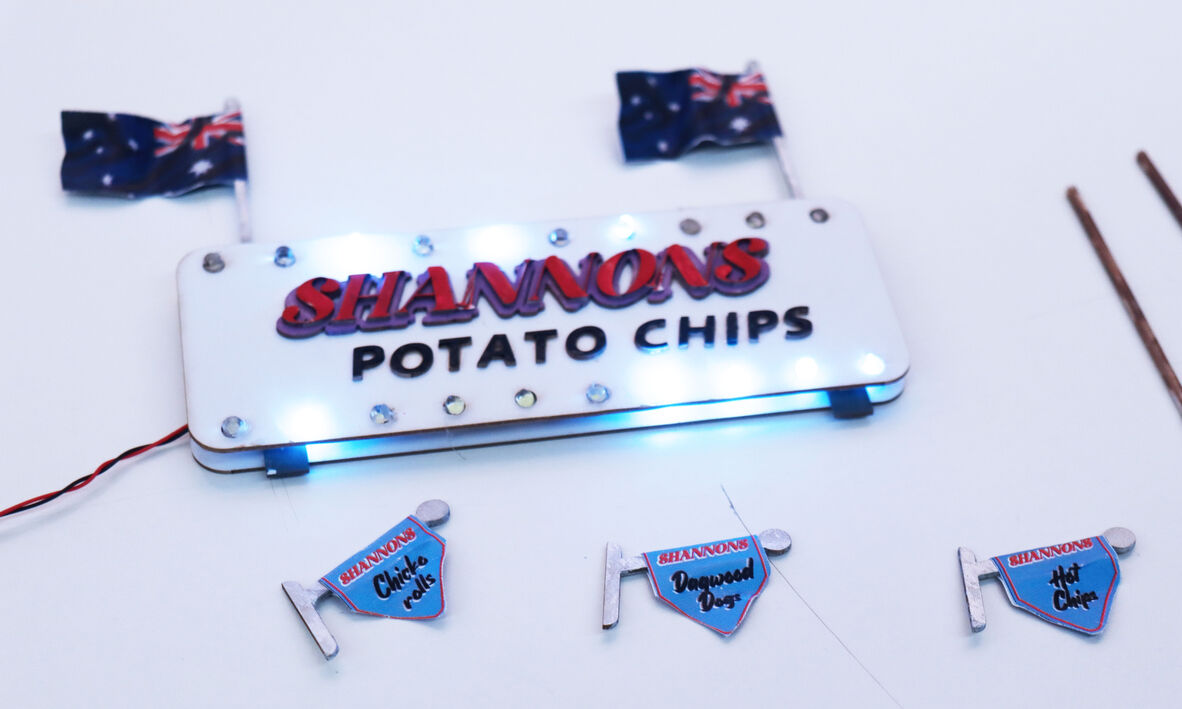
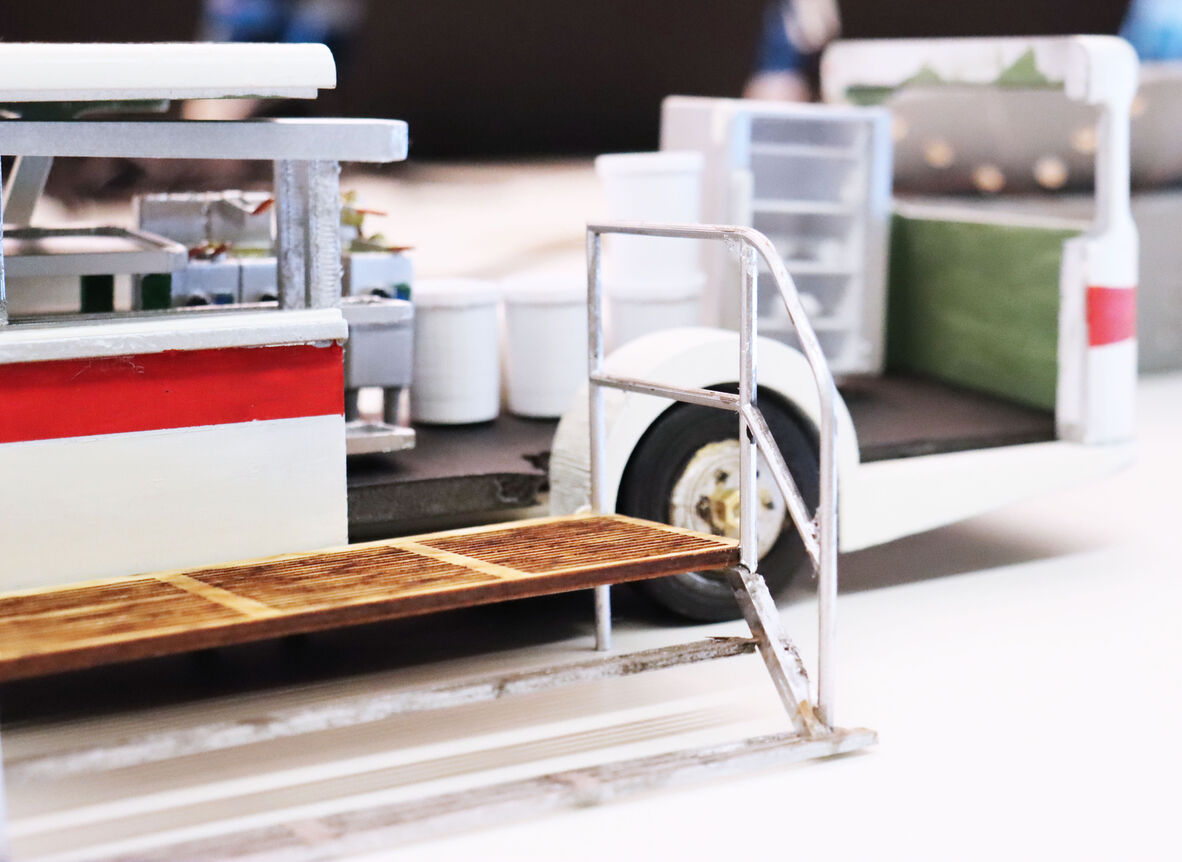
Fortune Teller Booth - Jacqui
Jacqui has been a very committed user of The Edge and shares our obsession with miniatures. She’s even become the master of miniature architecture, and we all look to her for support on our projects. A member of the Brisbane Miniature Enthusiasts' Association Inc (BMEA), you can check out some of Jacqui’s previous work made at The Edge in our Queensland Architecture in Miniature workshop blog. She’s been back as a regular to Open Lab, continuing to work on replicating our favourite architectural designs in miniature, wait for our end of year wrap for a full run down!
For this project, Jacqui was there to help provide advice on scale, and of course created her own contribution of a Fortune Teller booth.
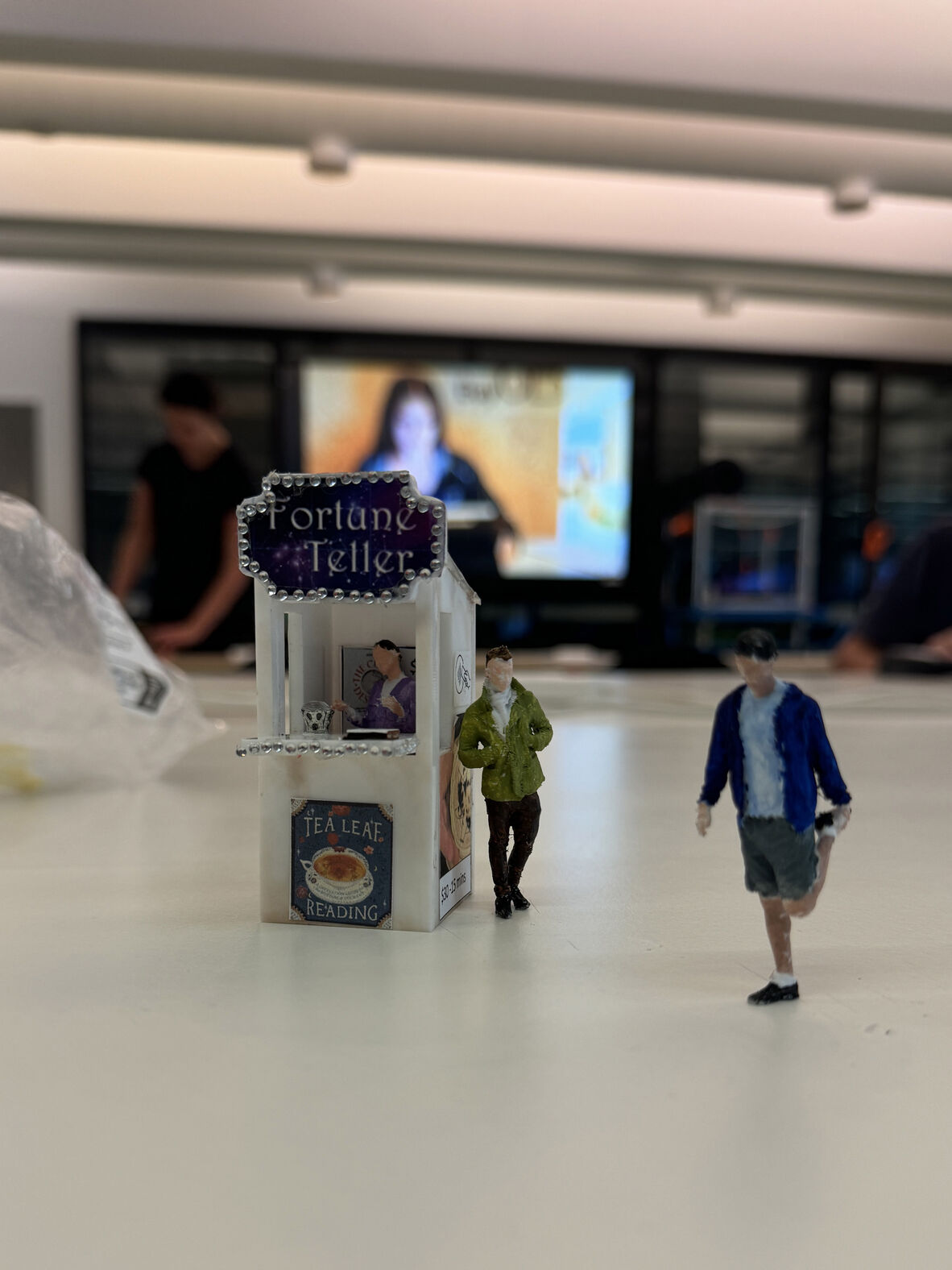
Zoltar and more - Anna
Anna, is a more recent visitor to our Open Lab sessions. Anna designs, 3D prints and decorates pose-able 3D printed dolls, props and dioramas in her free time. Finding out about the miniature Ekka project was the catalyst for Anna to reconnect with Hack the Evening for the first time in a few years and we are so pleased to welcome her and her creations back into the space.
When she saw a 3D model on Thingiverse, Anna couldn't resist getting started by making a tiny Zoltar fortune-telling machine, just like the one from the 1988 movie ‘Big’ starring Tom Hanks.
Anna also thought we'd want to see some clowns on stilts, handing out balloons in side show alley, so she took model of a bearded man in top hat and tails (actually an Abraham Lincoln model she'd found online) and stretched out the legs in TinkerCad to create a tall, slim figure that would be great to print and paint up.
Most recently Anna has been working on a Tea Cup ride like the Mad Hatter ride at Disneyland. Anna couldn't find a good Mad Hatter model so her latest attraction will be a White Rabbit Tea Cup ride. We can't wait to see this when its finished.
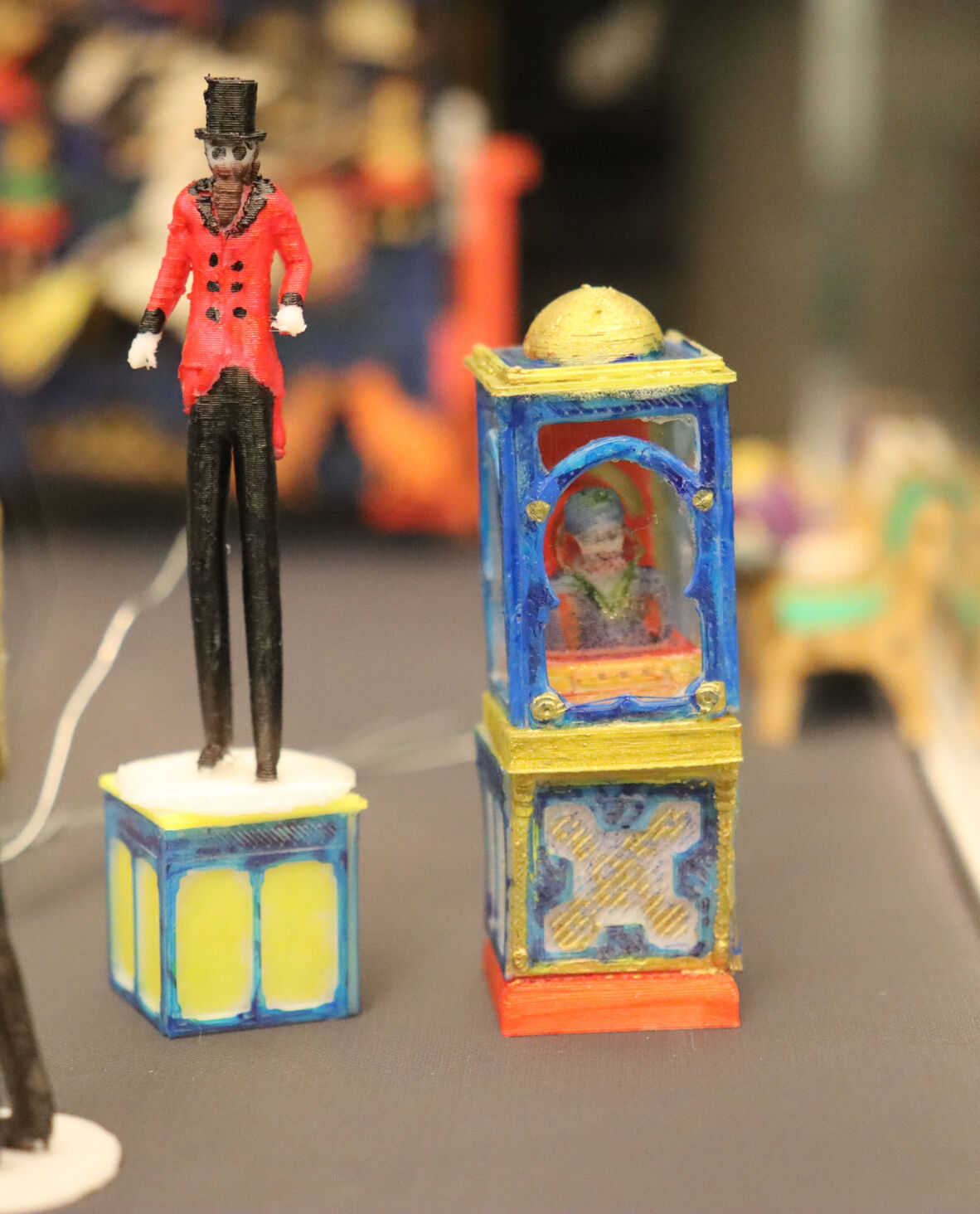
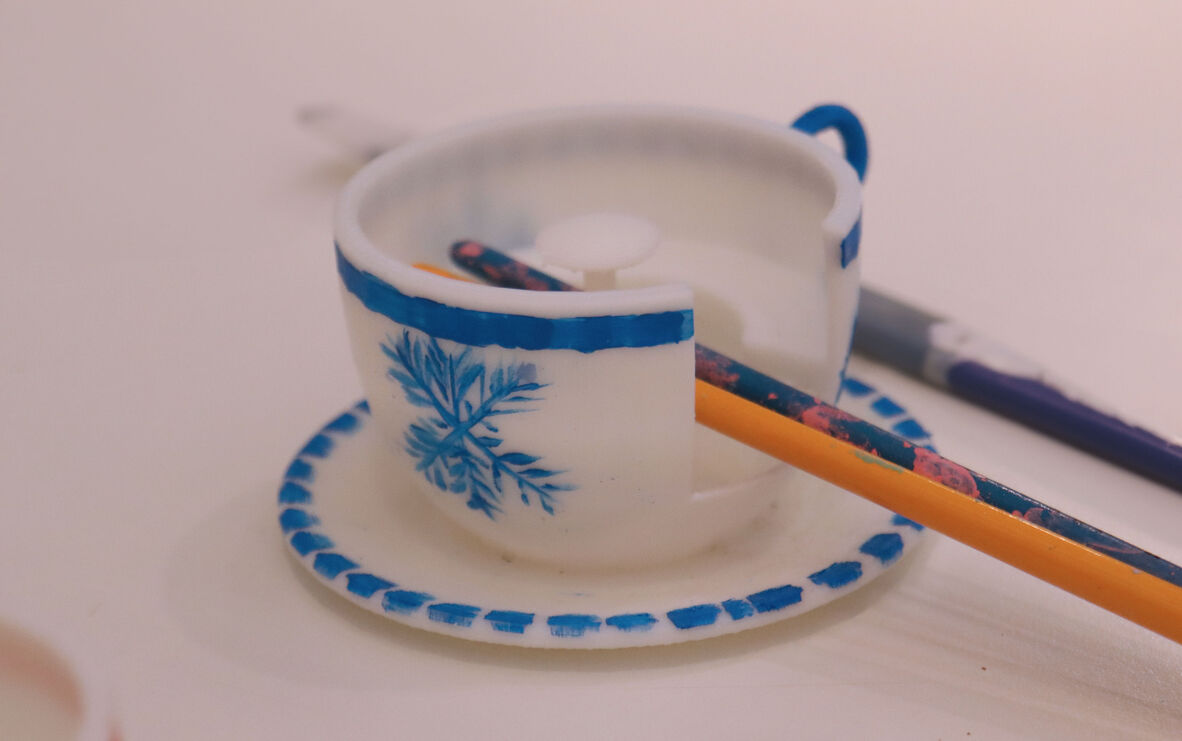
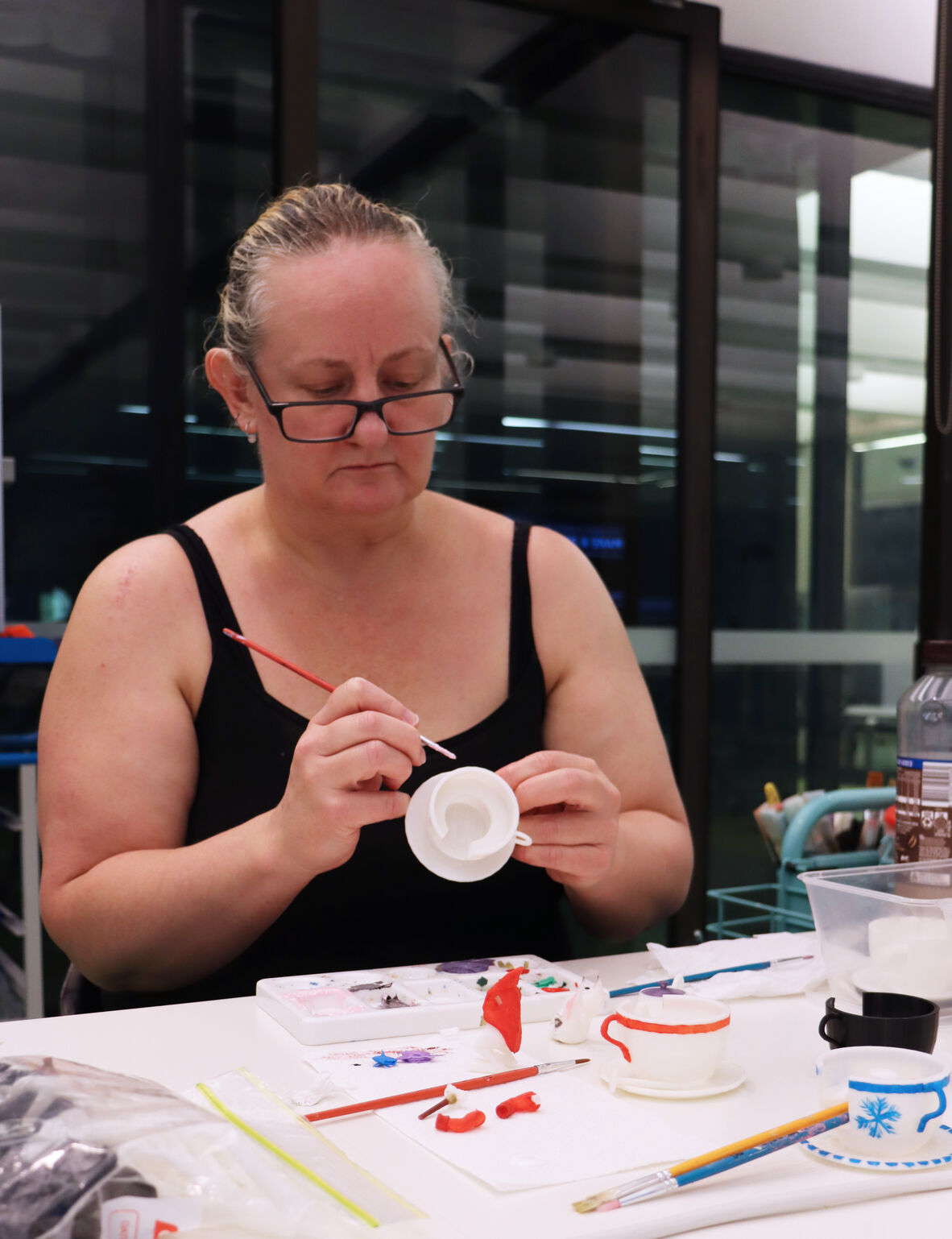
It doesn't end there either – Garry has been modelling a roller coaster on Blender, Carolina has been creating a Gravitron, lots of our participants are getting swept up in the miniature obsession and its not too late for you to get involved.
Come along to Hack the Evening on Thursday nights at The Edge from 5–8pm. Over the coming weeks we are going to focus on bringing more colour and movement to the miniature with the aid of electronics. So come along, learn some new skills and get making.
Comments
Your email address will not be published.
We welcome relevant, respectful comments.